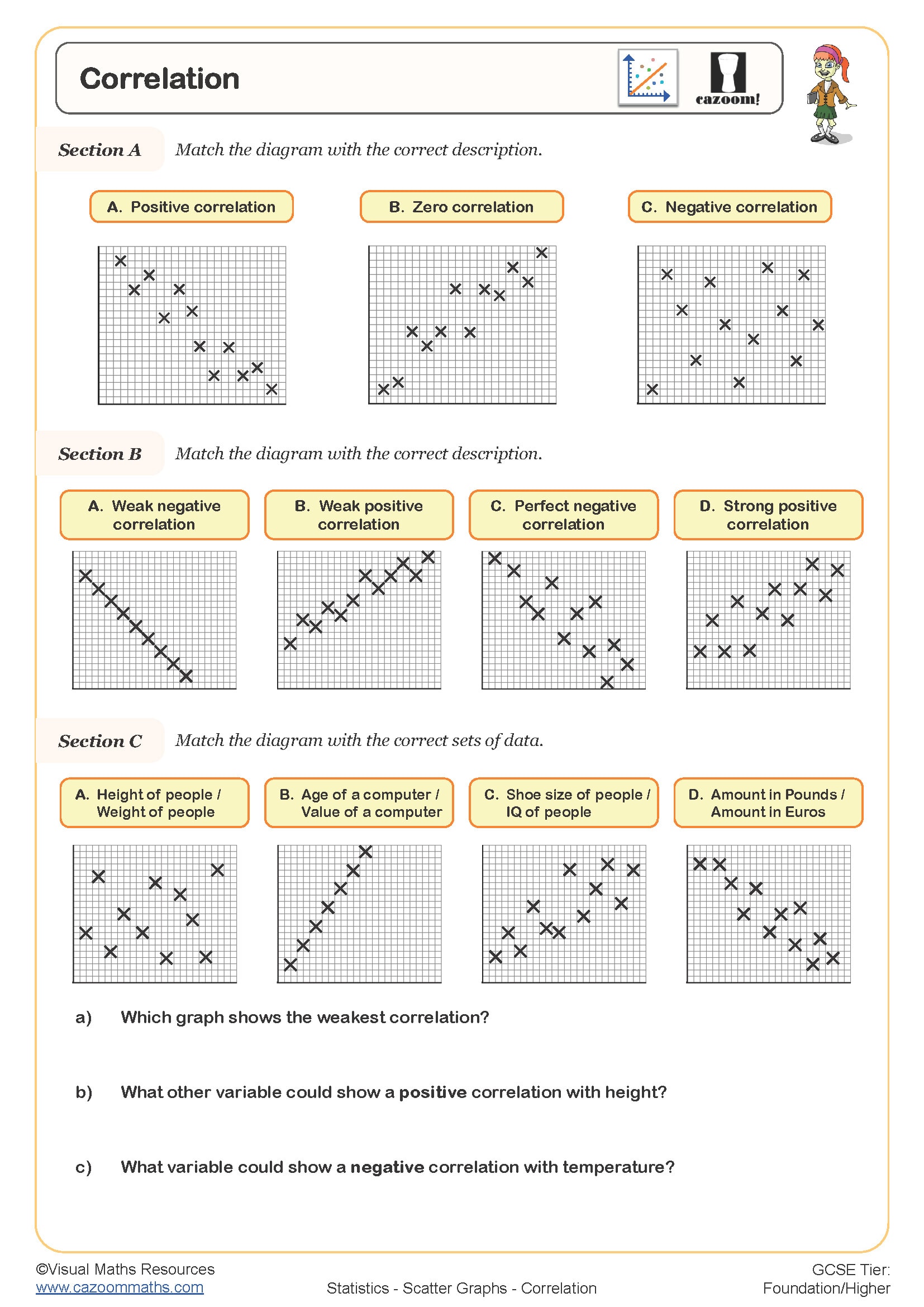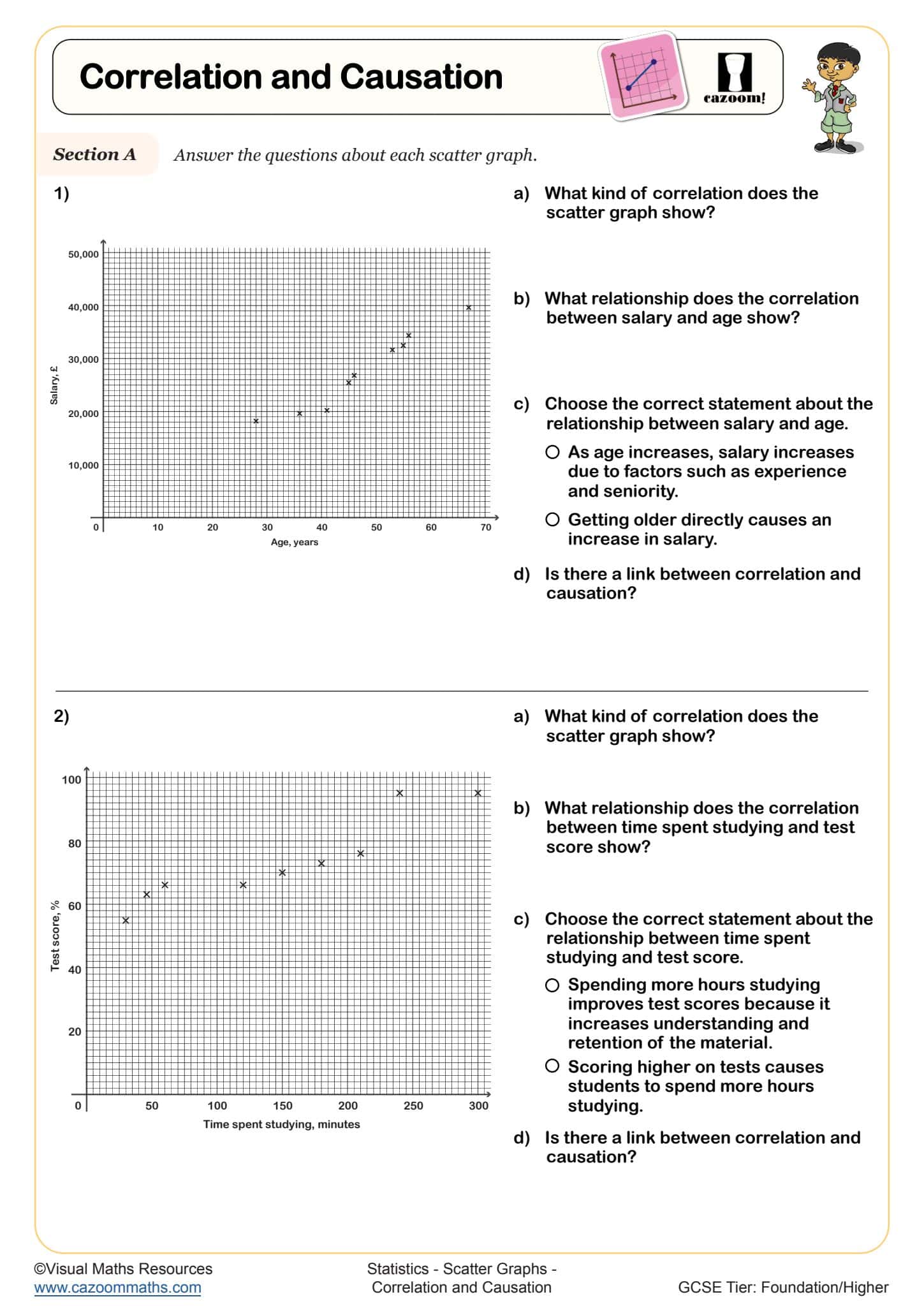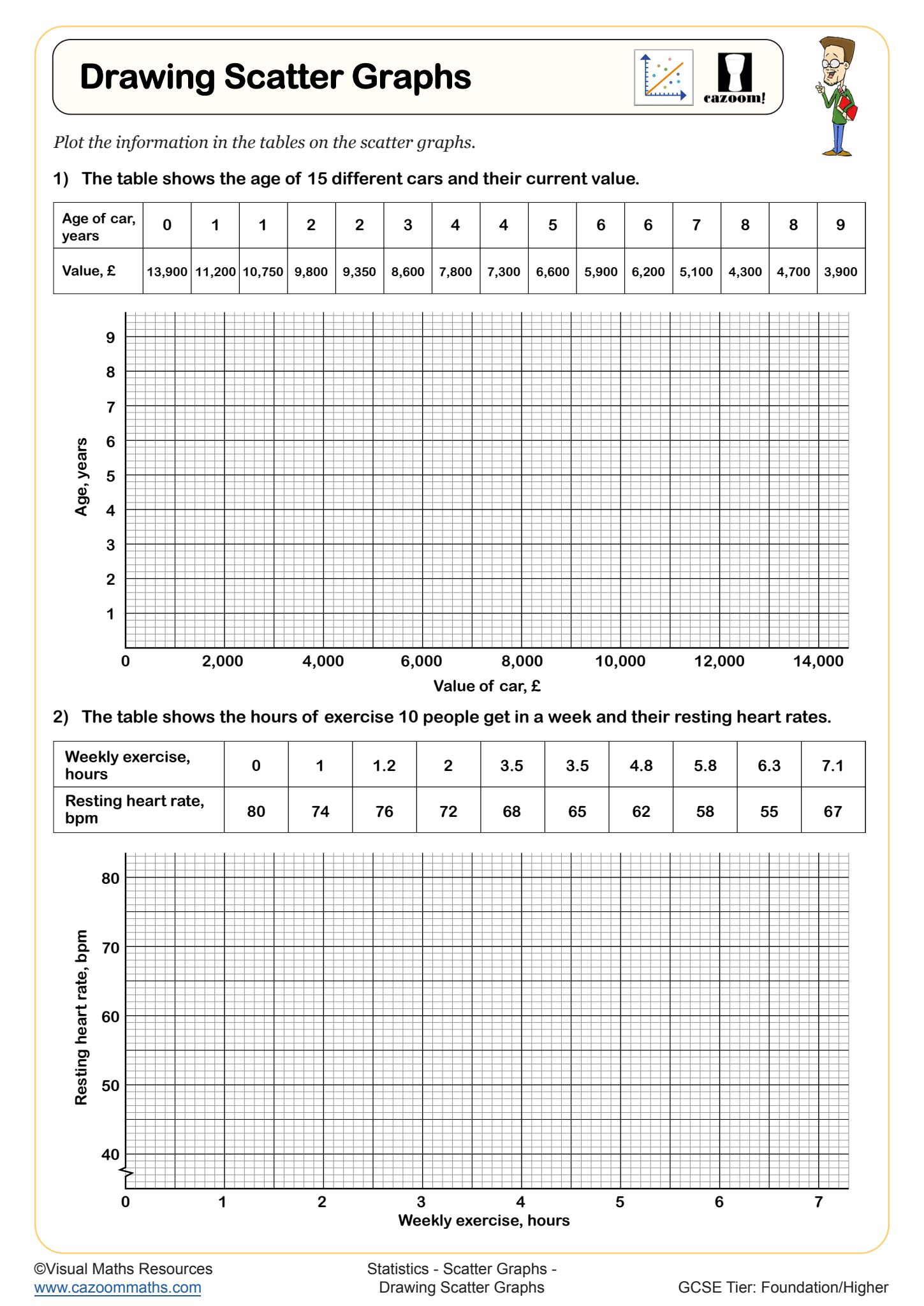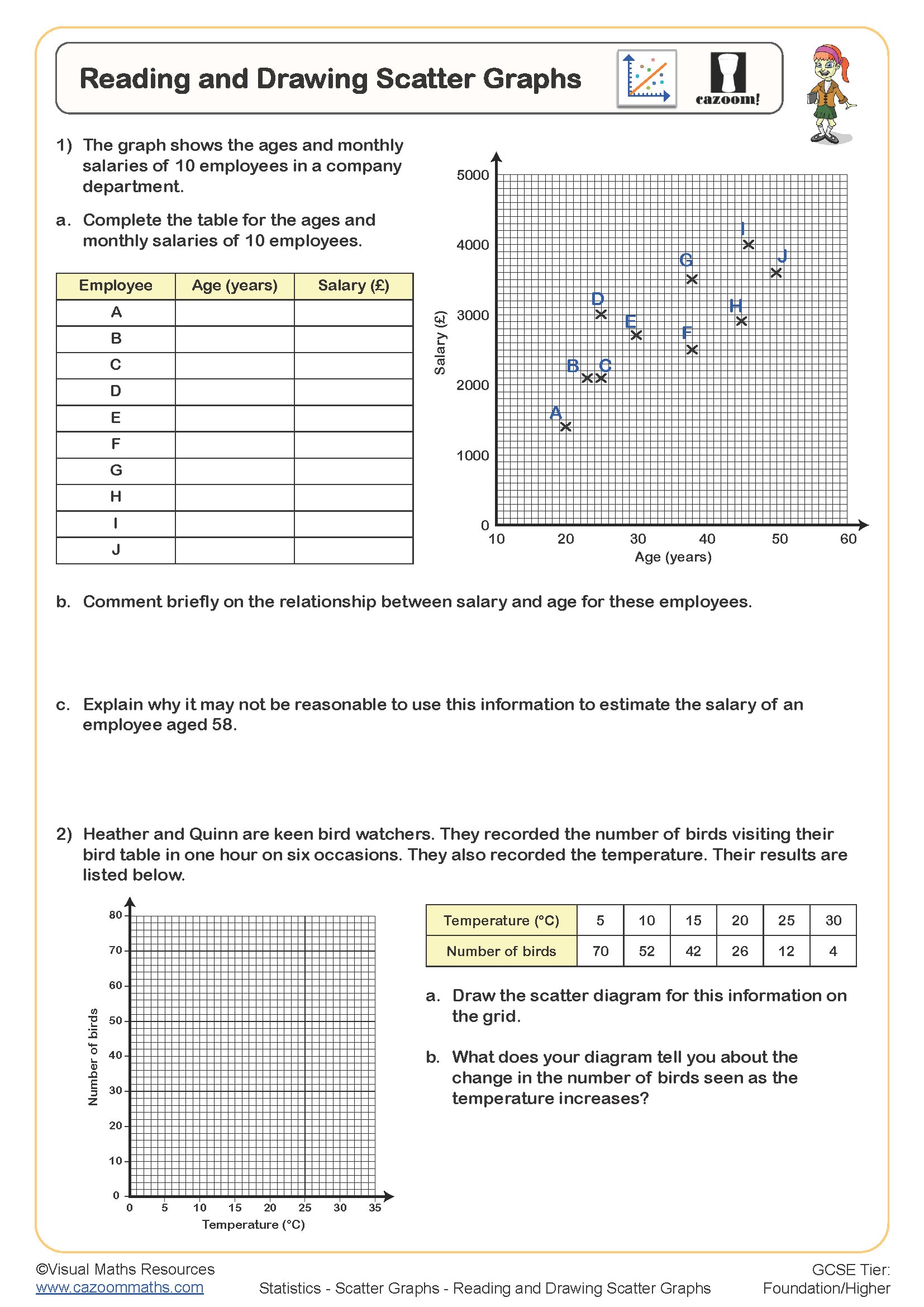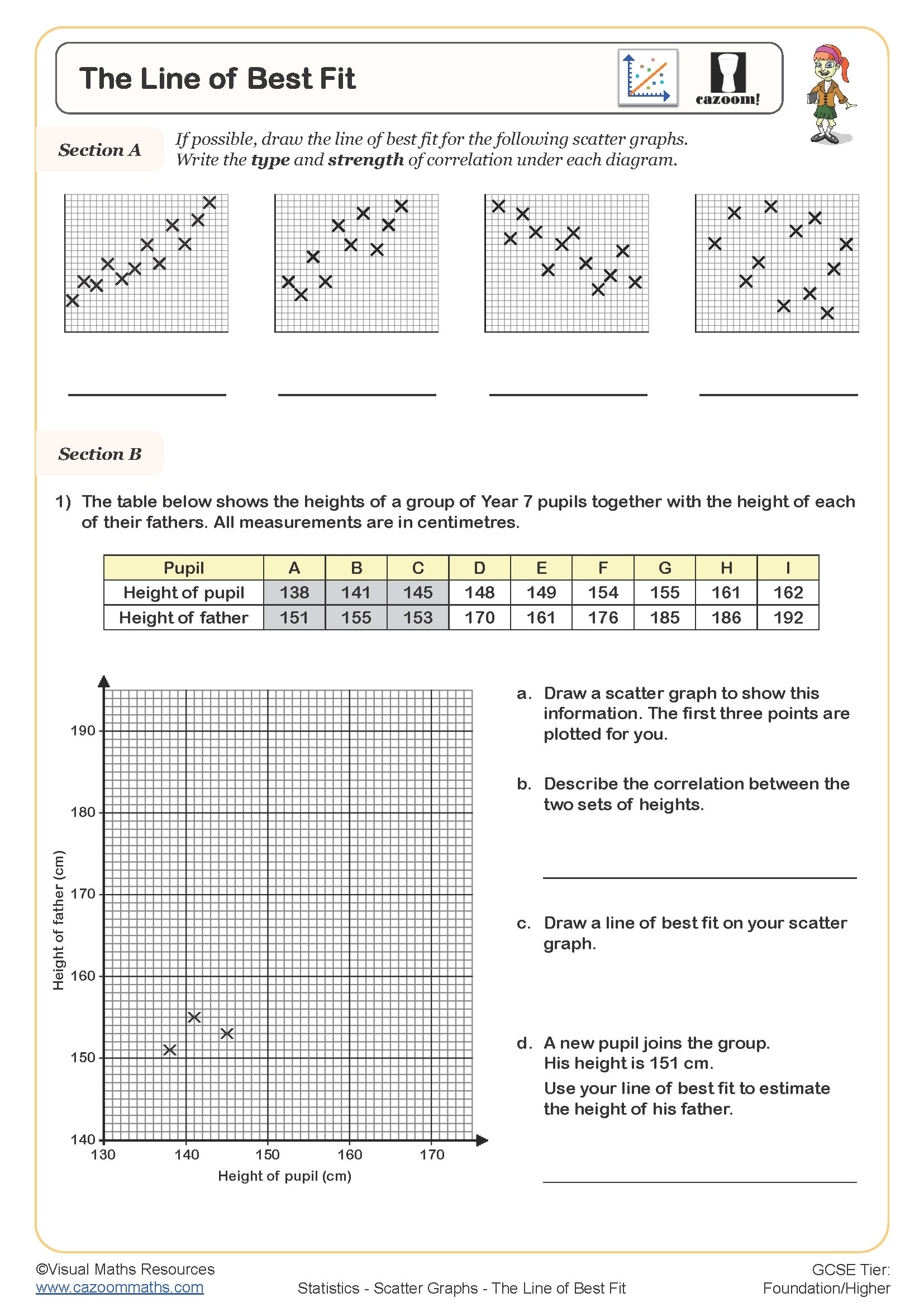Year 8 Scatter Graphs Worksheets
7 Reasons Year 8 Ready-to-use Scatter Graphs Worksheets Improve Exam Performance
Understanding scatter graphs enables students to interpret relationships between variables more effectively, moving them beyond simple charts toward sophisticated statistical thinking. Year 7 students learned basic graph plotting, but Year 8 requires them to analyse bivariate data at a deeper level and understand correlation strength and predictive reasoning, which serves as the basis for advanced statistical concepts. Students develop instinctive pattern recognition through regular practice with different contexts when they study scientific experiments and everyday situations. The regular exposure to data analysis helps students develop critical thinking skills, which they need for all data-based subjects in their curriculum, including geography fieldwork and science investigations.
Specific learning benefits include:
• Strengthens coordinate plotting accuracy
• Develops pattern recognition in data sets
• Builds confidence in interpreting correlation types
• Enhances predictive reasoning using trends
• Improves graph drawing precision
• Connects maths to real-world analysis
• Prepares students for GCSE statistics requirements
Cazoom Maths Statistics Topic Map: What These Worksheets Build Step by Step
These worksheets guide students systematically through a concrete understanding of plotted points, a pictorial representation of relationships, and an abstract interpretation of correlation strength. Moving from simple plotting exercises to complex analysis tasks, each worksheet includes worked solutions demonstrating the reasoning behind correlation identification and line placement.
The worksheets in this collection include:
• Reading and Drawing Scatter Graphs — mastering accurate plotting and interpreting bivariate data from given graphs
• Correlation — identifying positive, negative, and no correlation through visual pattern recognition
• The Line of Best Fit — drawing appropriate trend lines and using them for estimation and prediction
• Interpreting Scatter Graphs — analysing real-world contexts and describing relationships using mathematical vocabulary
• Scatter Graph Problems — applying knowledge to multi-step questions involving data collection and analysis
Why Teachers Trust These KS3 Scatter Graphs Activities for Differentiated Learning
These scatter graph worksheets address the wide range of abilities found in Year 8 classrooms through carefully structured progression within each sheet. The beginning questions start with basic plotting tasks that lead to interpretation challenges, which require students with higher abilities. The visual design of scatter graphs helps students who struggle with abstract number concepts because it illustrates mathematical relationships through concrete visual representations. Educators who have limited time find answer keys useful because they show both the final answers and the analytical steps, which enable them to detect and solve student misunderstandings efficiently. Cazoom Maths resources save planning time whilst ensuring comprehensive coverage of curriculum requirements.
Connecting Scatter Graph Skills to Students' Everyday Experiences
Scatter graphs appear throughout modern life, from weather forecasting to social media analytics. Understanding correlation helps teenagers critically evaluate claims in advertising and news reports about cause-and-effect relationships.
• Sports performance tracking and training improvement analysis
• Social media engagement patterns and viral content prediction
• Weather data relationships between temperature and ice cream sales
• Gaming statistics comparing practice time to high scores achieved
• Science experiments measuring plant growth against different variables
• Technology usage correlates with screen time and sleep quality
• Shopping trends analysis of price versus product ratings
• Environmental studies linking pollution levels to health outcomes
